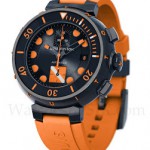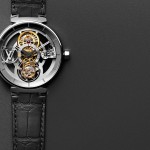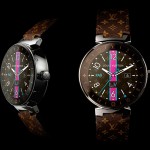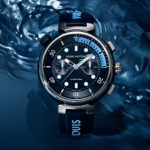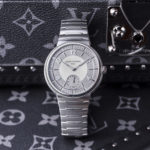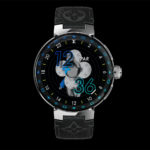Up Close: Louis Vuitton Tambour Opera Automata
Extravagant, kinetic watchmaking.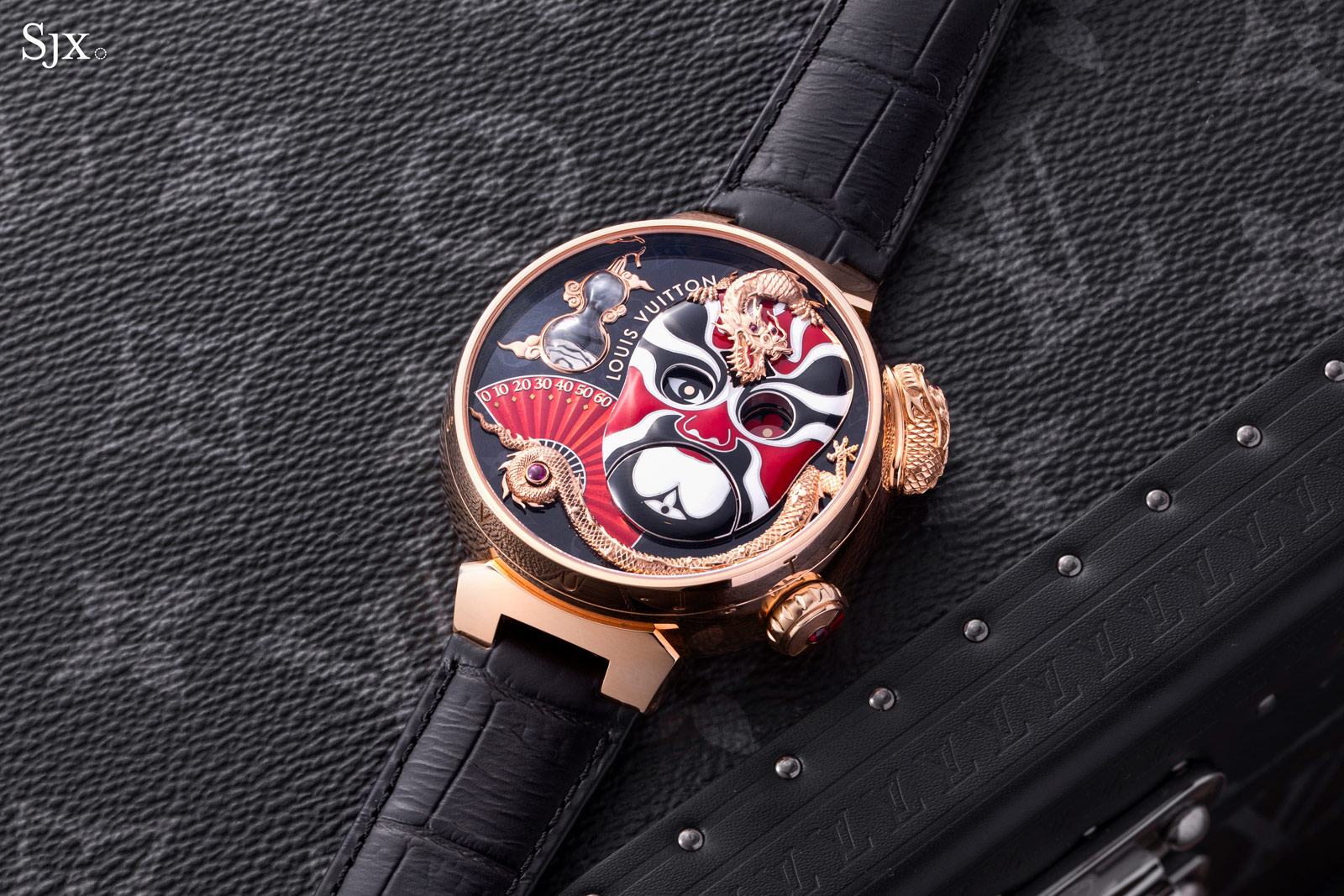
Louis Vuitton has received much press recently for the Tambour, a restrained, sleek watch with just three hands. But the brand also makes watches at the other end of the spectrum, as personified by the Tambour Opera Automata. A large watch with an even larger presence, the Opera Automata is an extremely complicated watch with a kinetic dial – that is also enamelled by Anita Porchet.
The pusher at two o’clock activates the automata on the dial, which also serves to indicate the time with jumping hours and retrograde minutes. Although mechanically identical to the earlier Carpe Diem automata watch, the Opera Automata is more striking thanks to its vivid colours, and also more relatable for East Asians given the theme.
Initial thoughts
The Tambour Opera Automata is a statement watch that is hard to miss by virtue of its size and colour. Although the extravagant style is typical of Louis Vuitton, the details of the enamel dial are particularly fine. Moreover, the motif is more appealing to me personally compared to its predecessor, the Carpe Diem from three years ago.
I was impressed by the Carpe Diem, both for its complexity and execution, particularly the delicate enamelled snake, but the skull-and-snake motif was too much for me. It was also less relatable, since it is a vanitas, a familiar concept in Western culture. With a Chinese opera motif, the Opera Automata, on the other hand, is more relatable.
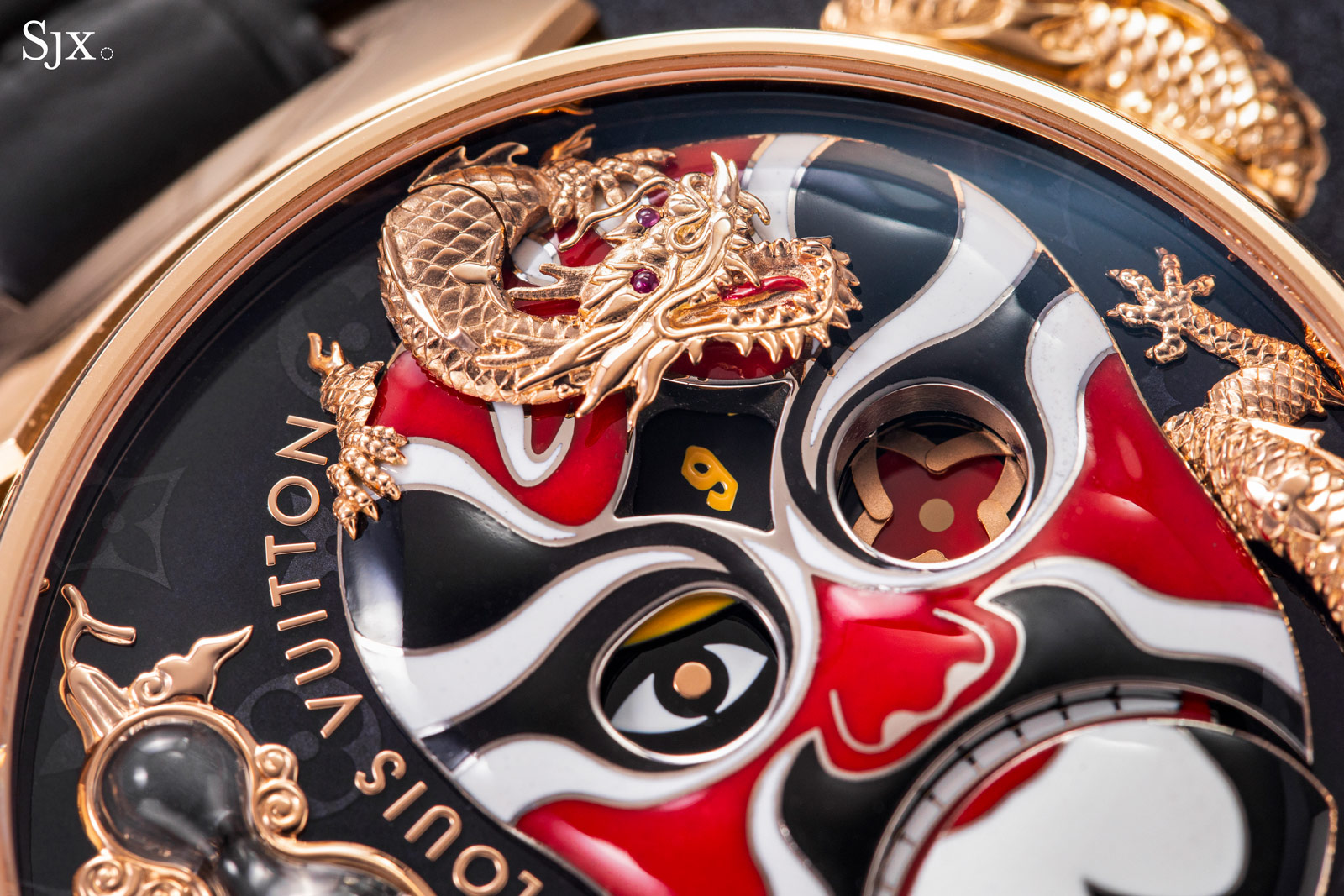
The Opera Automata is impressively decorated on the front – unsurprisingly since it is the work of Anita Porchet. The dial is a mix of cloisonné and champleve. The quality of enamelling is excellent, as expected, although the dragon is a missed opportunity. The snake on the Carpe Diem was enamelled, and it was one of the most refined details on the dial.
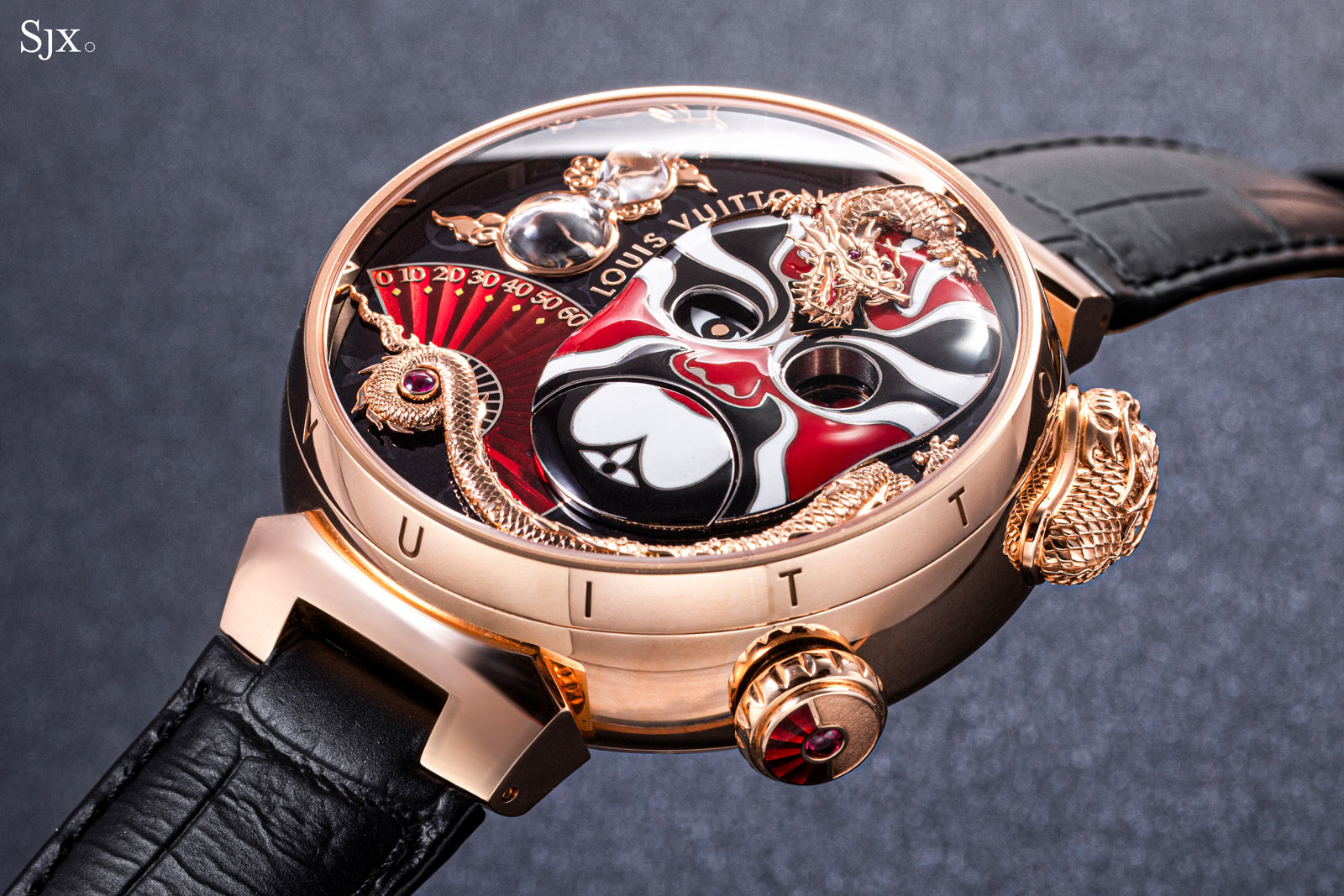
The movement is essentially the same as that of the Carpe Diem, which means it is highly complicated and huge. As a result, the Opera Automata is a big watch at almost 47 mm in diameter and over 14 mm high. Based on the minute repeater calibre of La Fabrique du Temps (LFT), the movement is large enough to comfortably fill up the entire case. That’s attributable to complexity of the automata, which alone accounts for over 100 of the 426 parts of the whole.
As a result, the watch makes a statement on the wrist, but it is not easily wearable because of the size and weight. But for someone who likes complicated watches with heft, this fits the bill. I own another Tambour model that has similar dimensions and probably heavier weight; it feels good on the wrist. I would not expect a watch like that to be small.
More broadly, automata watches are rare, even though highly complicated watches are common. The only other brand making automata watches in notable numbers is Jaquet Droz, making the Opera Automata a novel proposition.
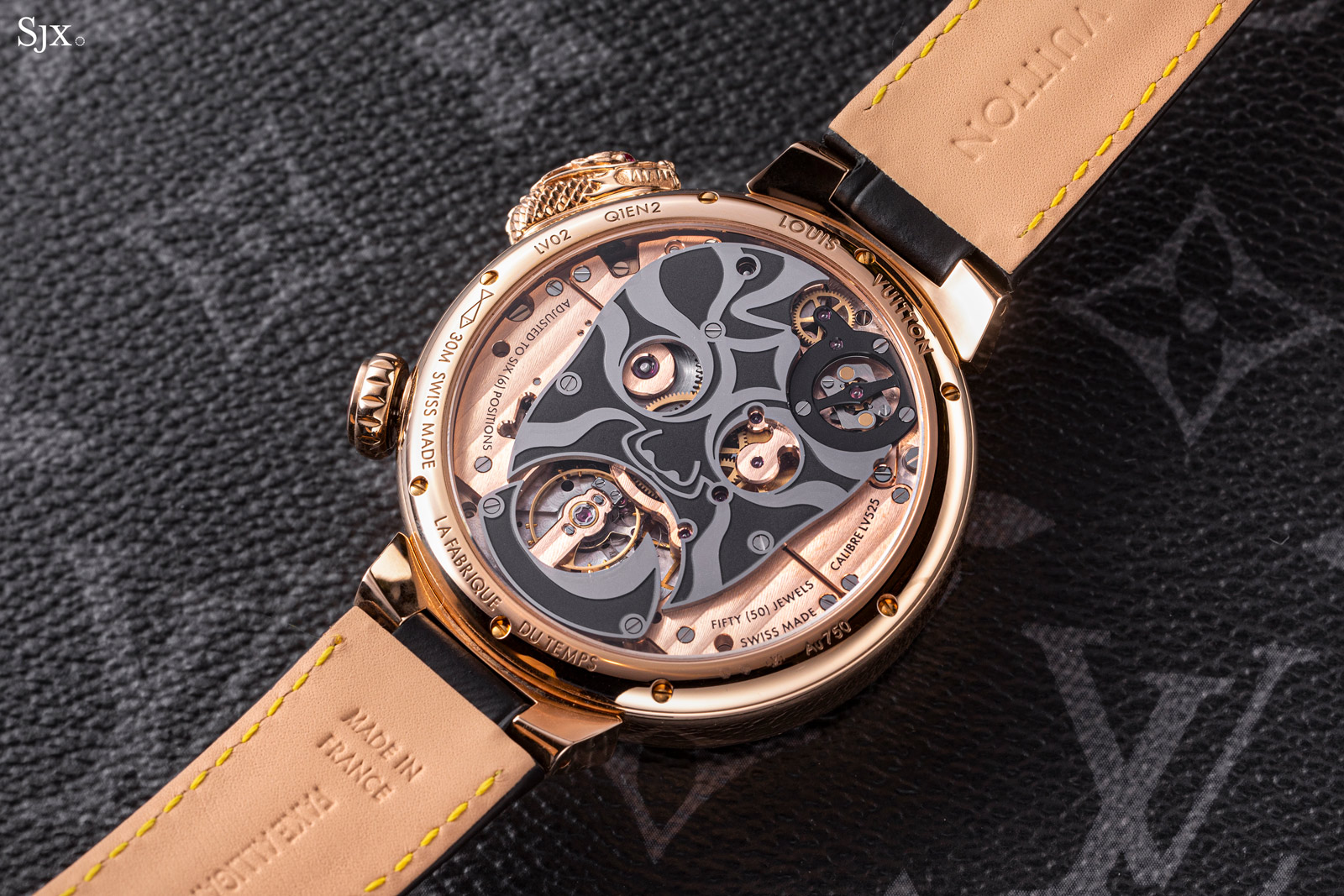
Changing faces
The Opera Automata is inspired by 变脸 (biàn liǎn) – literally “changing face” – an art that is part of Sichuan opera. Used by performers to express different emotions or characters, biàn liǎn involves the near-instantaneous changing of masks, often with the swipe of a fan or cape.
Here the automata changes the face, albeit not as dramatically as on stage. Once activated, the automata change the face and tell the time simultaneously in a 16-second mechanical procession.
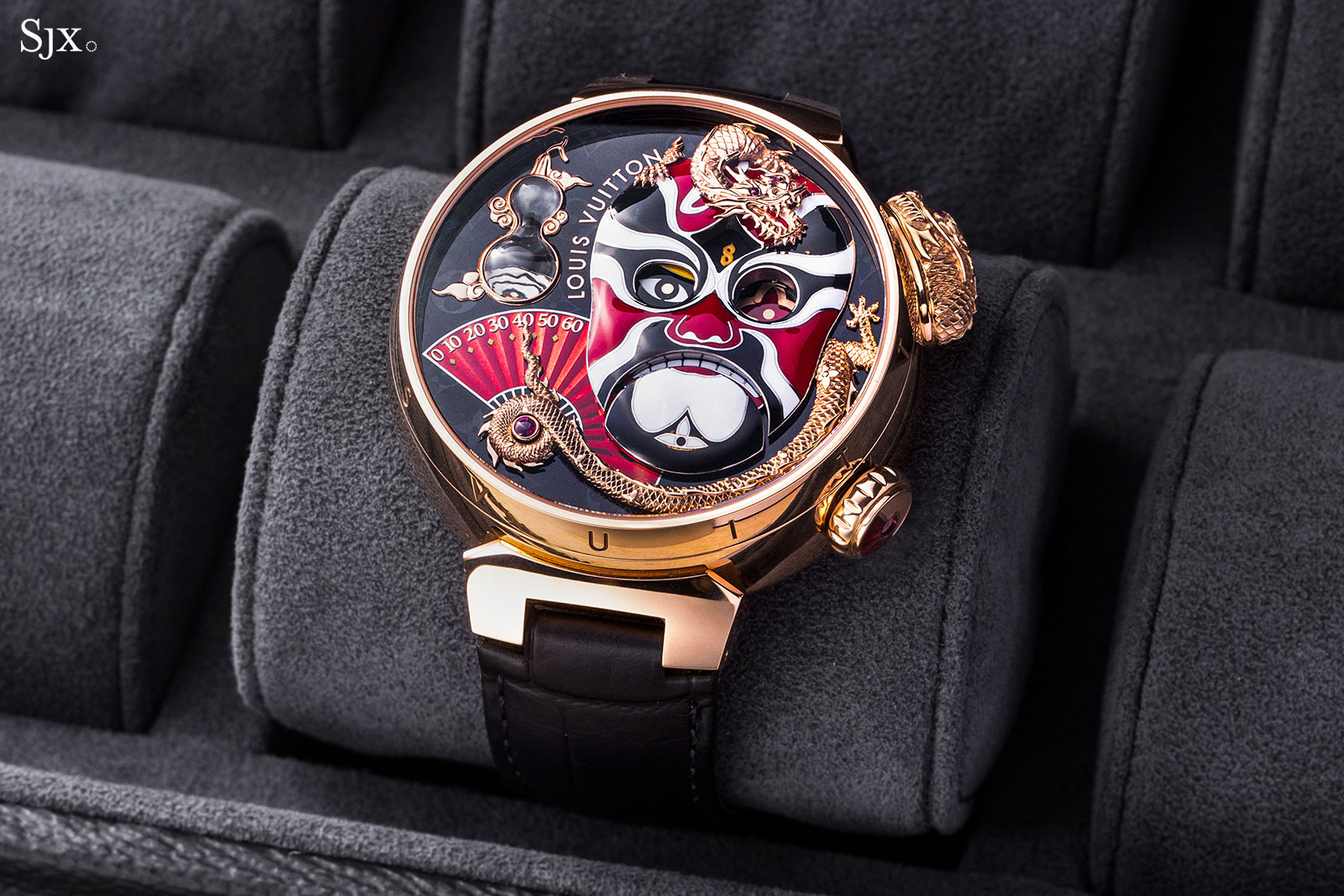
The time is 8:40
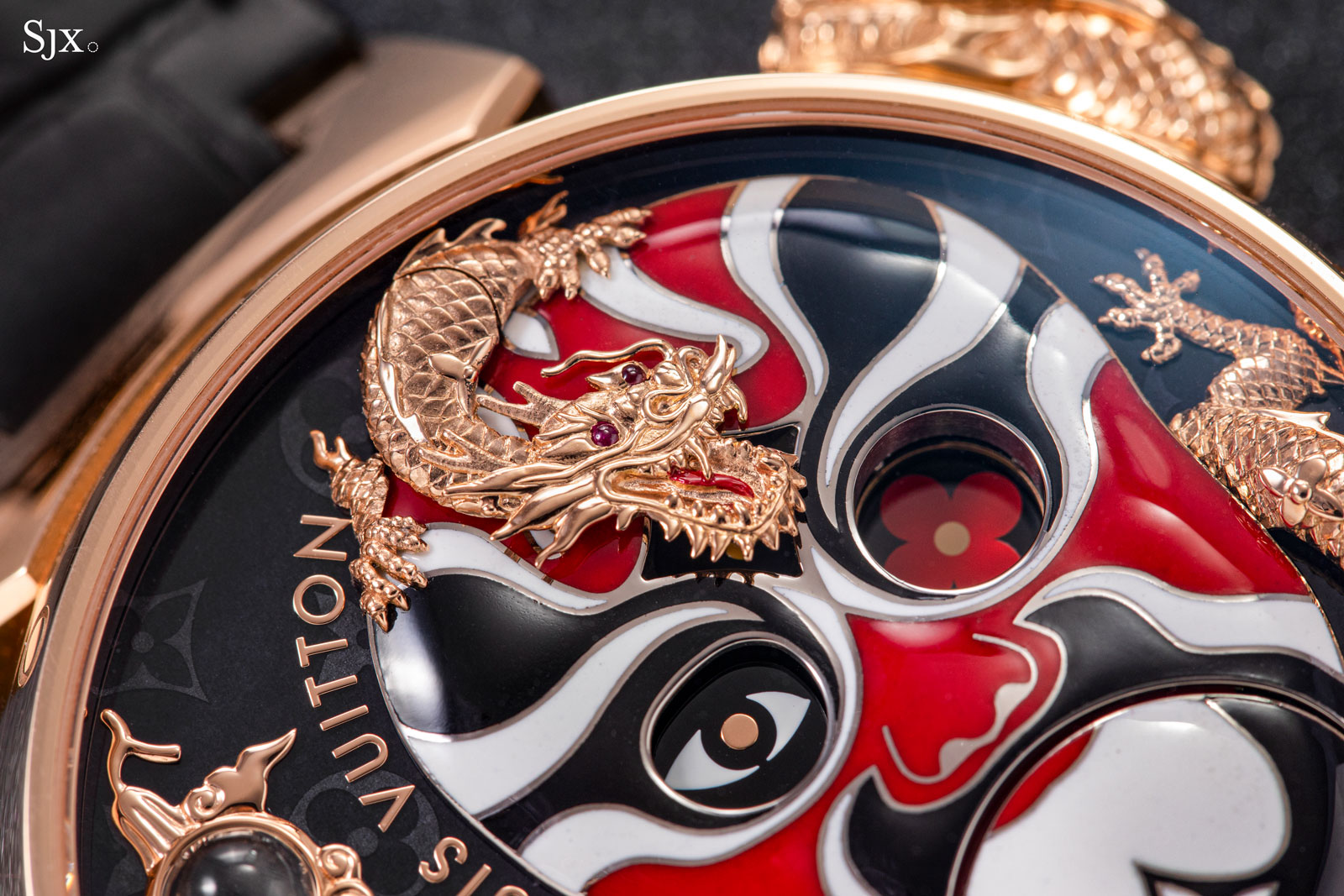
The dragon swivels back and forth to reveal the hours in the forehead of the mask, while the dragon’s tail points to the minutes on the fan. As that is happening, the jaws of the mask open and close, the right eye frowns, while the left eye changes to form a Louis Vuitton monogram flower.
The dial of the Opera Automata is the work of the same duo behind the Carpe Diem – Anita Porchet for the enamel and Dick Steenman for the engraving.
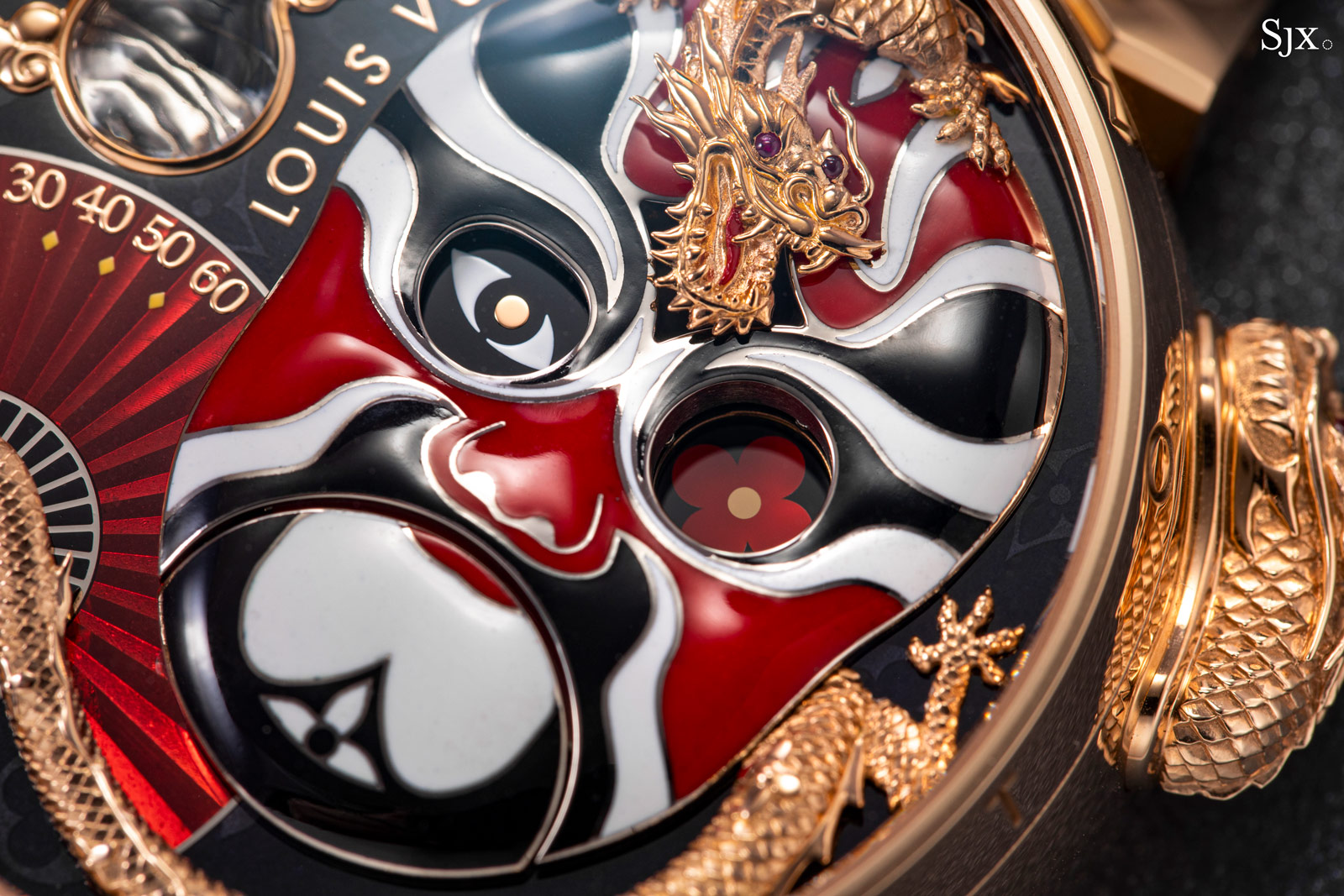
Predominantly red with elements of black and white, the mask bears the colours typical of a character with positive traits in Chinese opera. It is done in cloisonné enamel, the mask is made up of white gold wires carefully shaped by hand to form the outlines of the mask design. The gold wire borders are fine and seamless, reflecting the artisan’s a high level of skill.
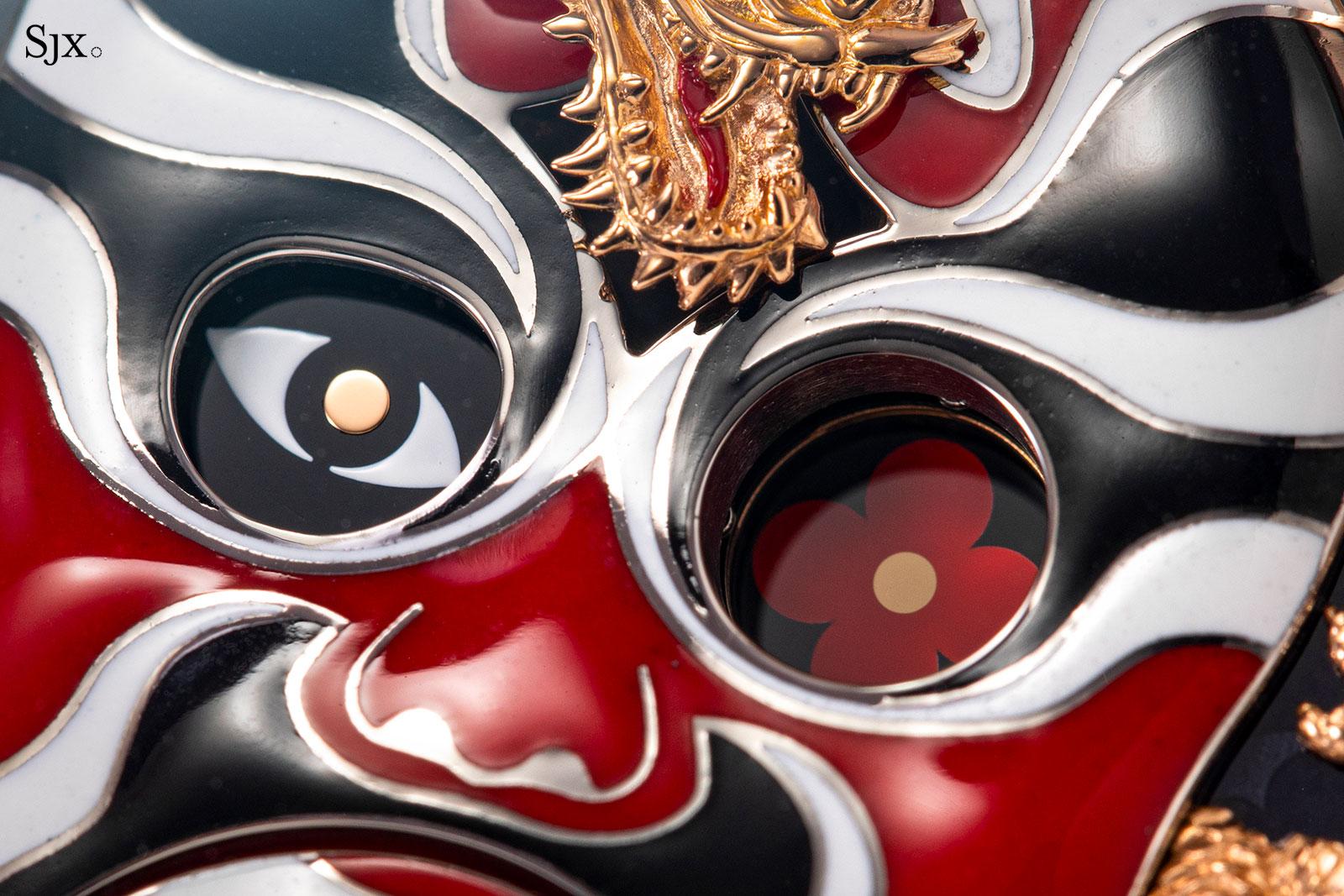
Both the dial base and fan are in champleve enamel, a technique that utilises translucent enamel over an engraved base. The fan is engraved with radial fluting to mimic the folds of a paper fan, and then covered with bright red enamel – a pattern echoed on crown that is similarly finished in champleve enamel.
In contrast, the dial is finished with a dark grey enamel. Below the grey enamel is a repeating Louis Vuitton monogram, but it remains subtle as the grey enamel appears to be an opaque black at the distance.
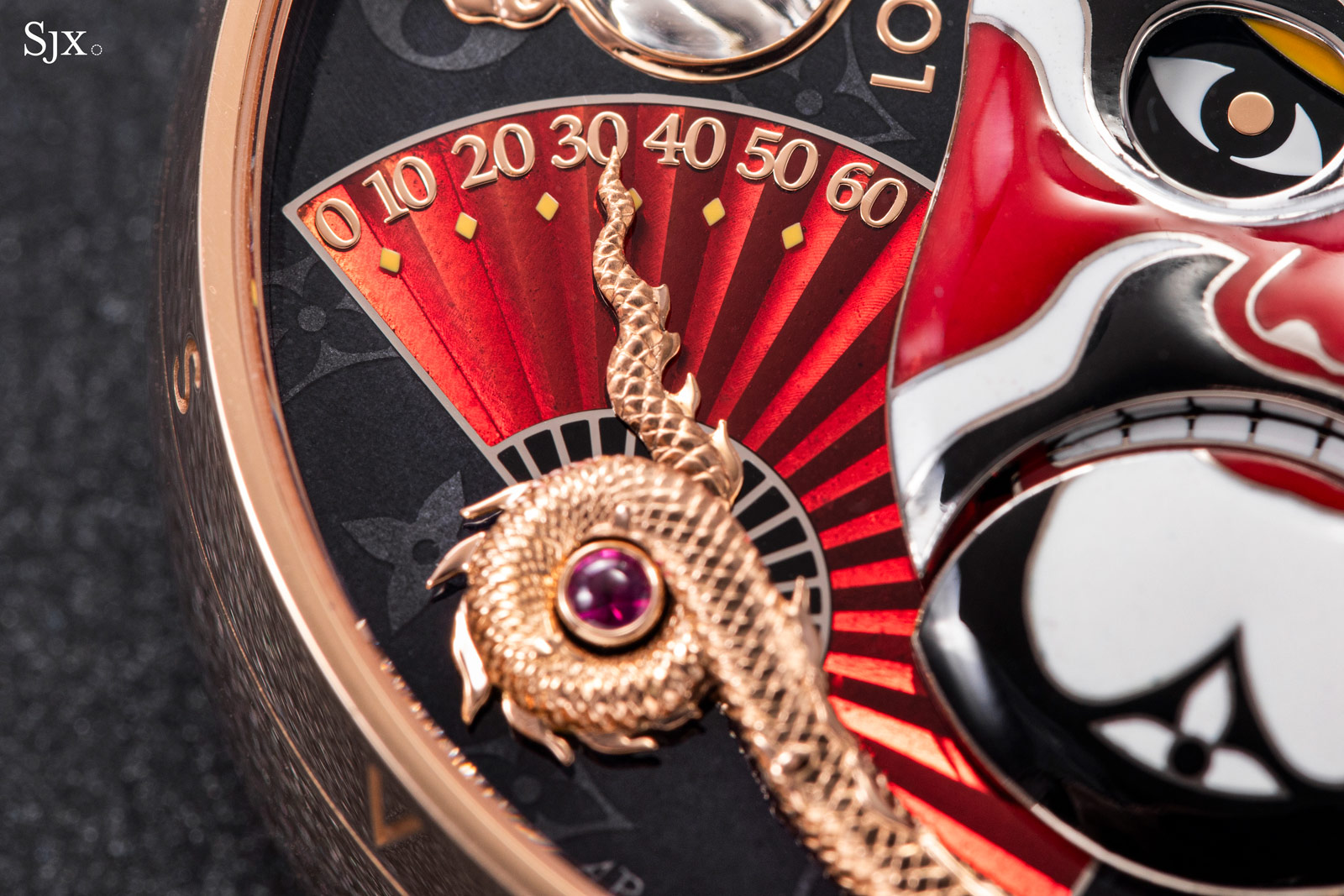
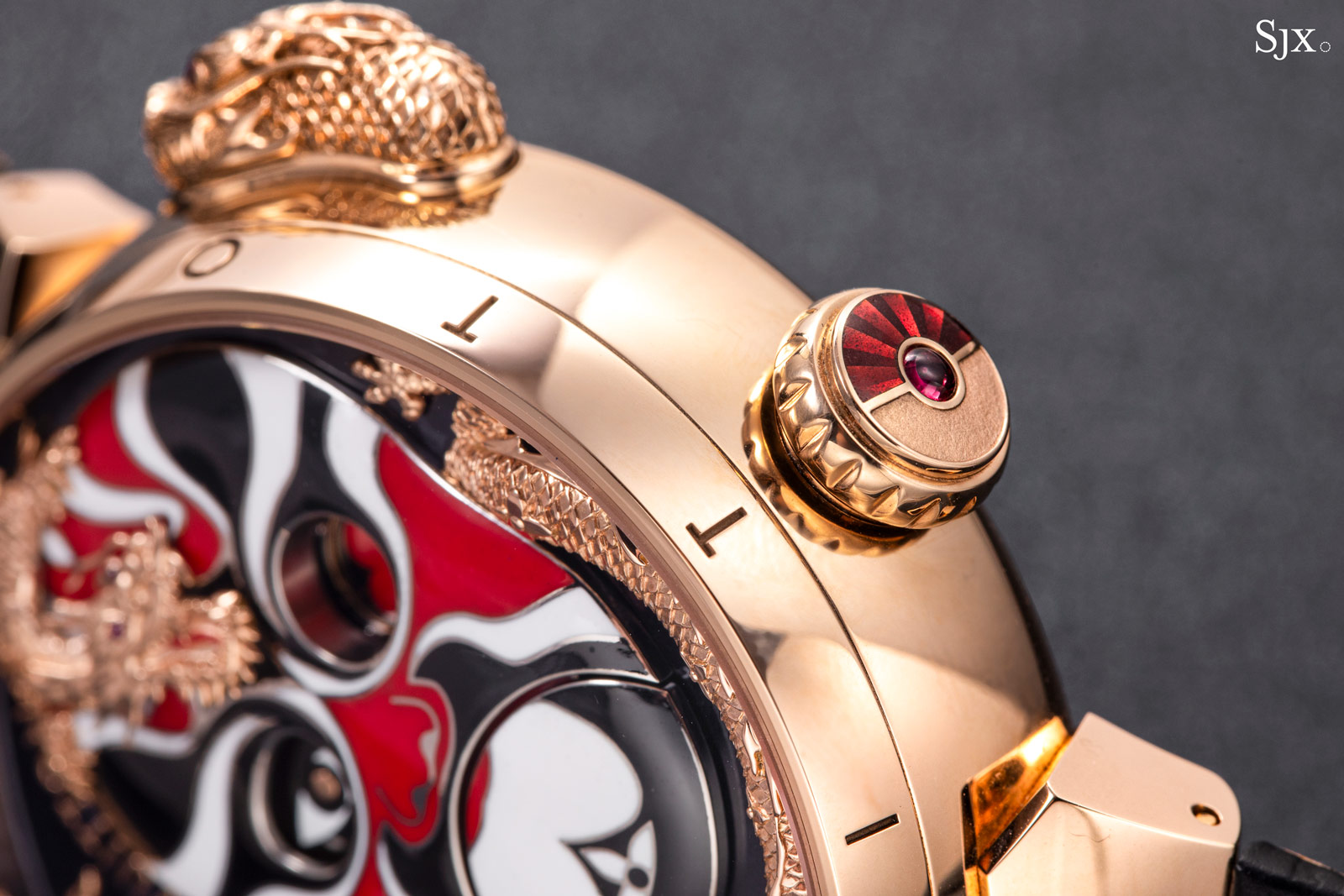
The crown is also set with a ruby at its centre
The engraving was done by Dick Steenman, formerly an independent artisan who last year joined La Fabrique du Temps, the complications manufacture owned by Louis Vuitton. Mr Steenman engraved the dragons, one on the dial and the other on the pusher at two o’clock, as well as the gourd that serves as the power reserve indicator.
In its proportions and details, the dragon correctly captures the style of a Chinese dragon, which is not always the case in watchmaking. Breguet, for instance, didn’t quite get it right with its squat dragon, while Vacheron Constantin did.
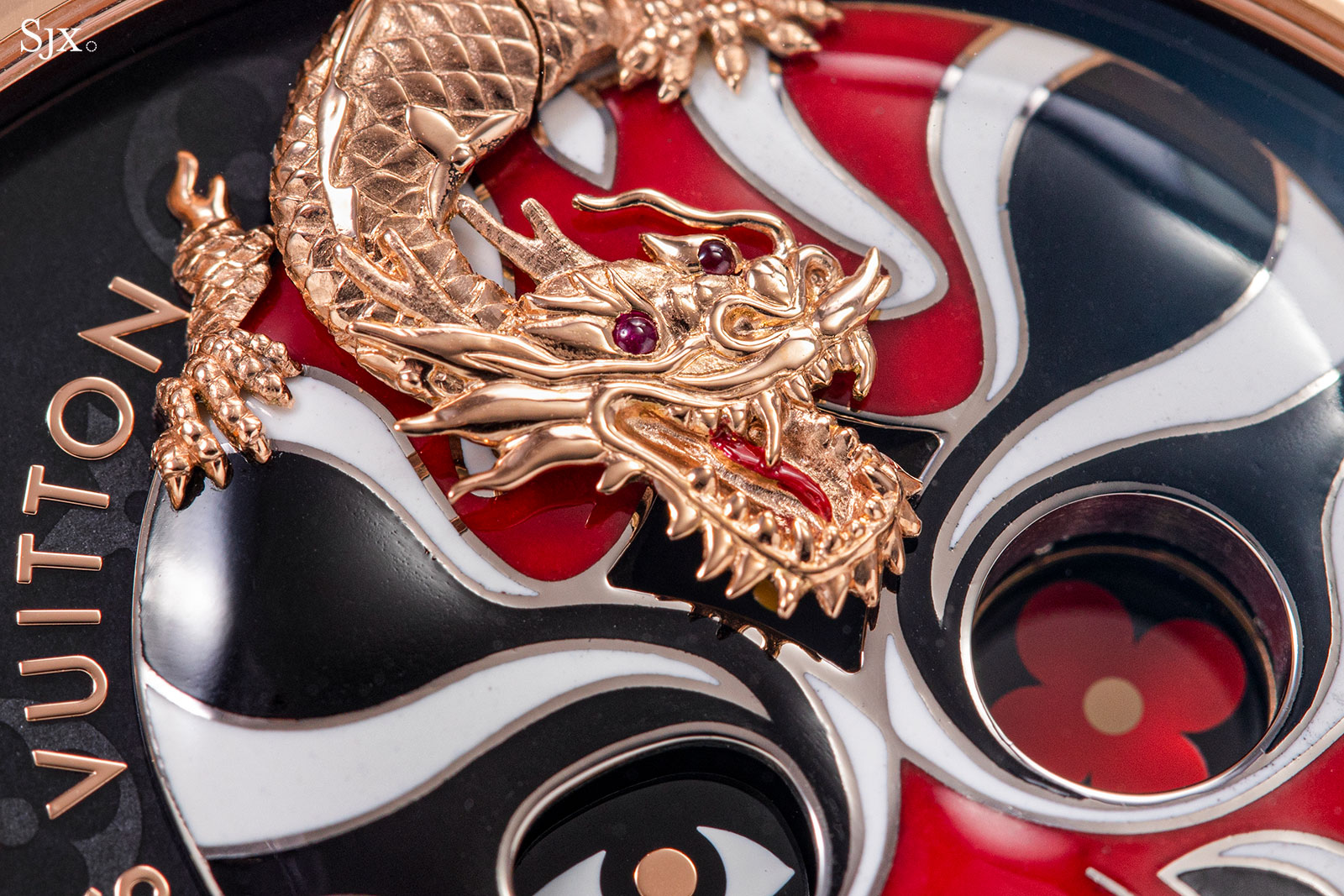
The dragon’s eyes are rubies, while its tongue is painted red
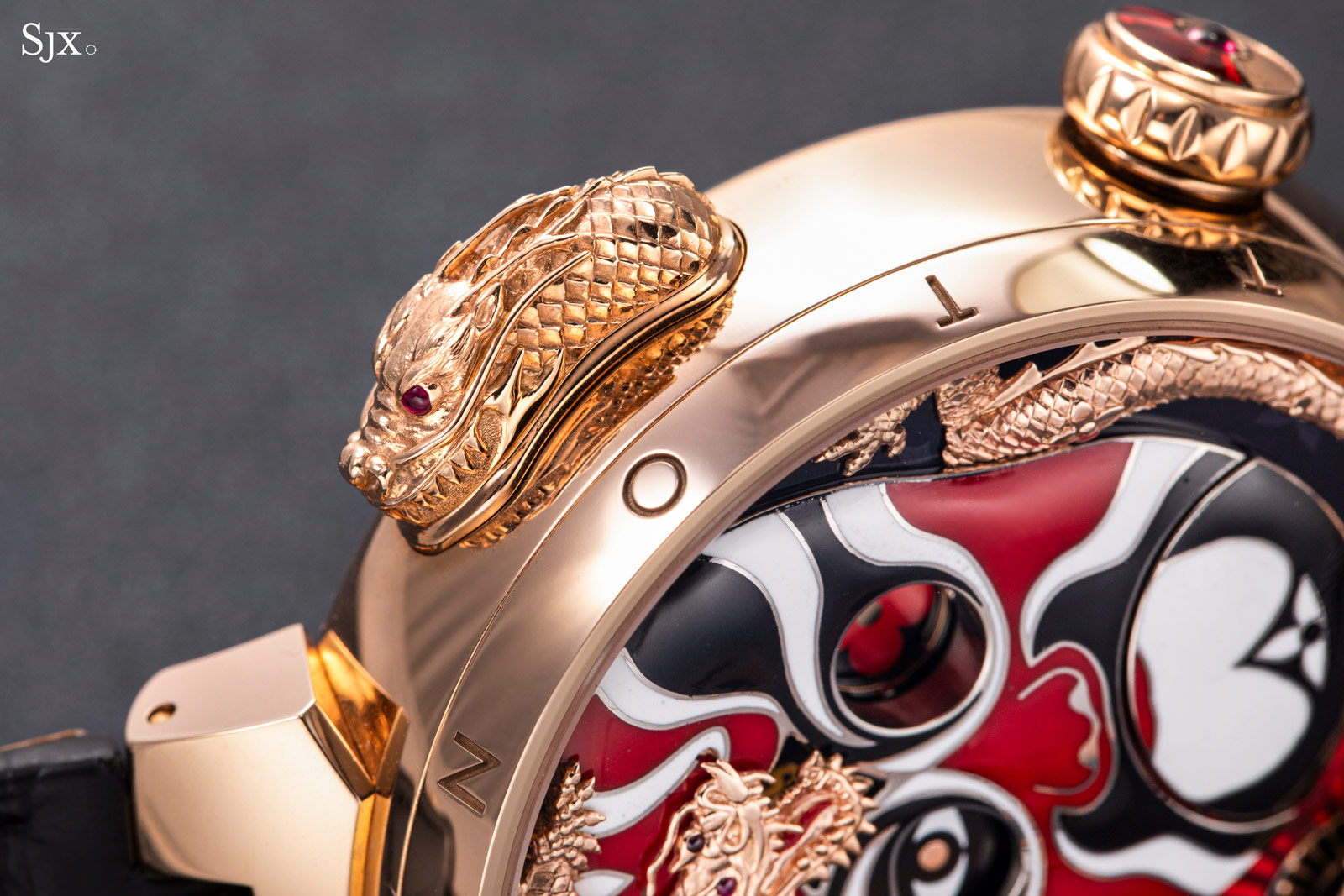
The dragon-shaped pusher similarly has rubies for eyes
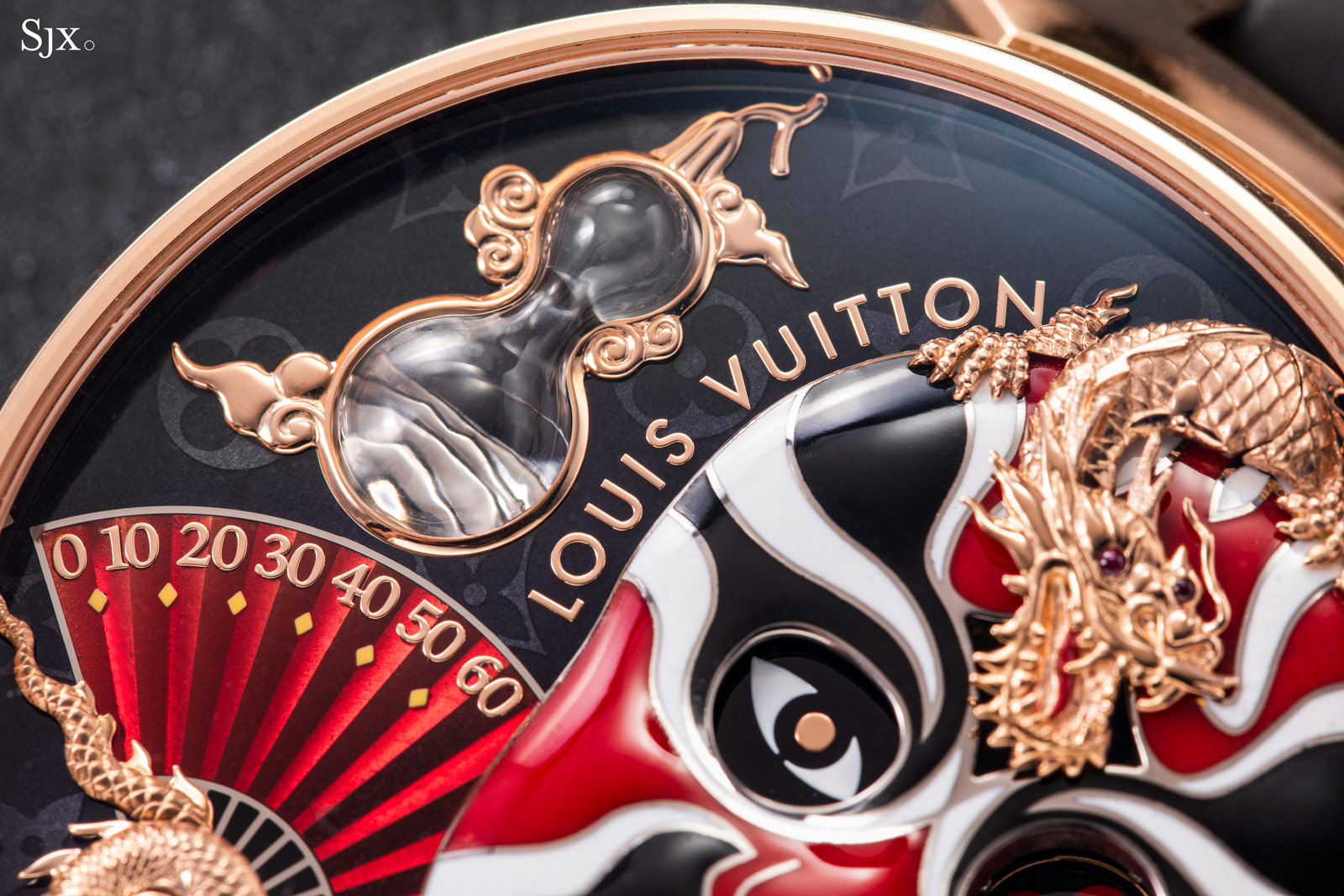
The bottle gourd is fronted with clear glass to reveal the power reserve indicator below that takes the form of the liquid level
The view from the back almost mirrors the front because a mask-shaped bridge has been constructed over the movement, which is conveniently laid out such that the balance wheel sits in the mouth of the mask.
Below the mask-shaped bridge is a movement that is made up of two sections. One is the base movement that does the timekeeping. This is a hand-wind calibre with a huge barrel that gives it a power reserve of 100 hours.
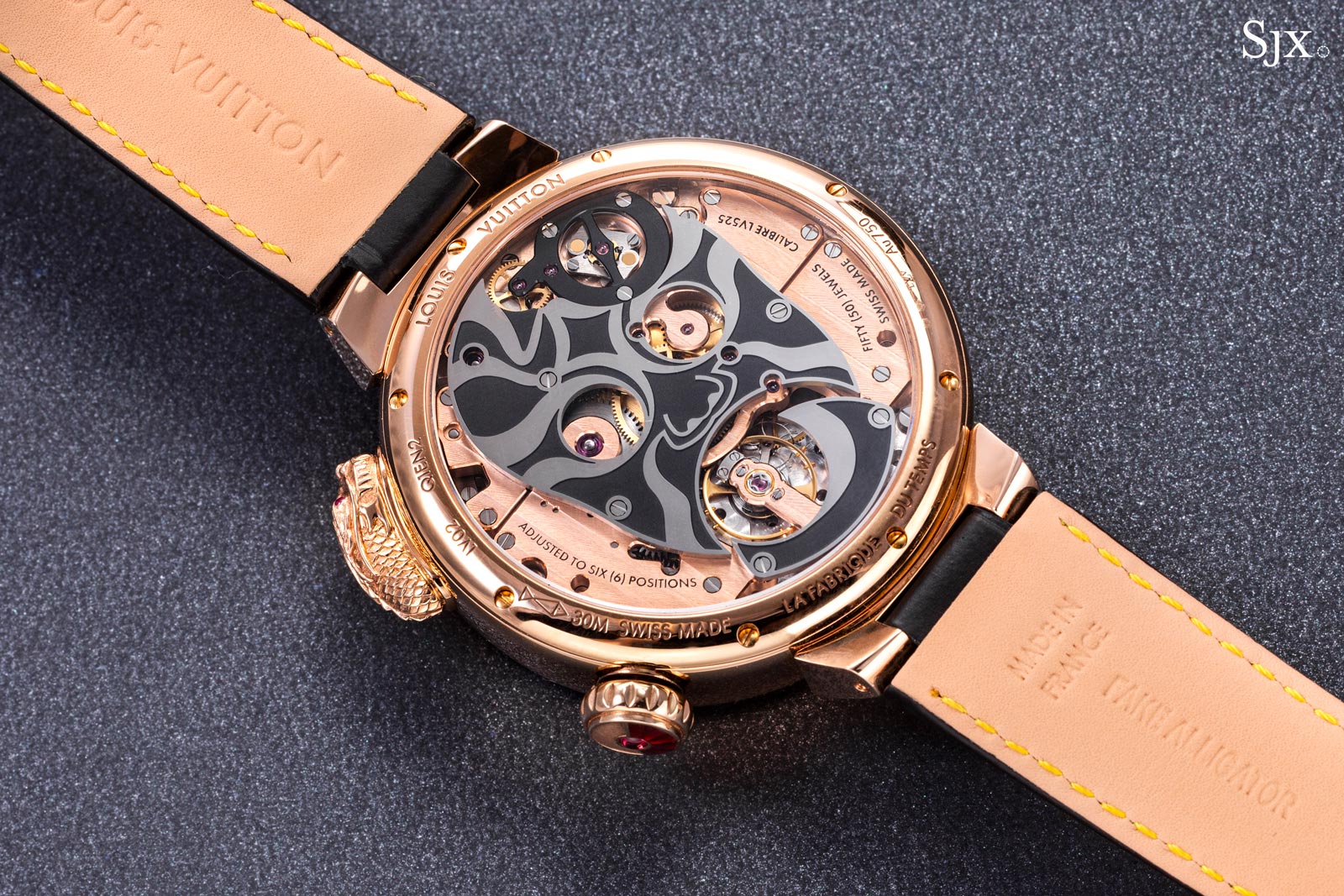
The other section is the automata mechanism that actually borrows elements from LFT’s minute repeating movement. The automata mechanism has its own going train that draws power from the base movement to drive the moving elements on the dial, as well as a centrifugal governor that is identical to that found in a minute repeater.
Here the governor serves the same function as it does in a repeater: it regulates the speed of the automata gear train, ensuring that the individual automatons move at the correct pace.
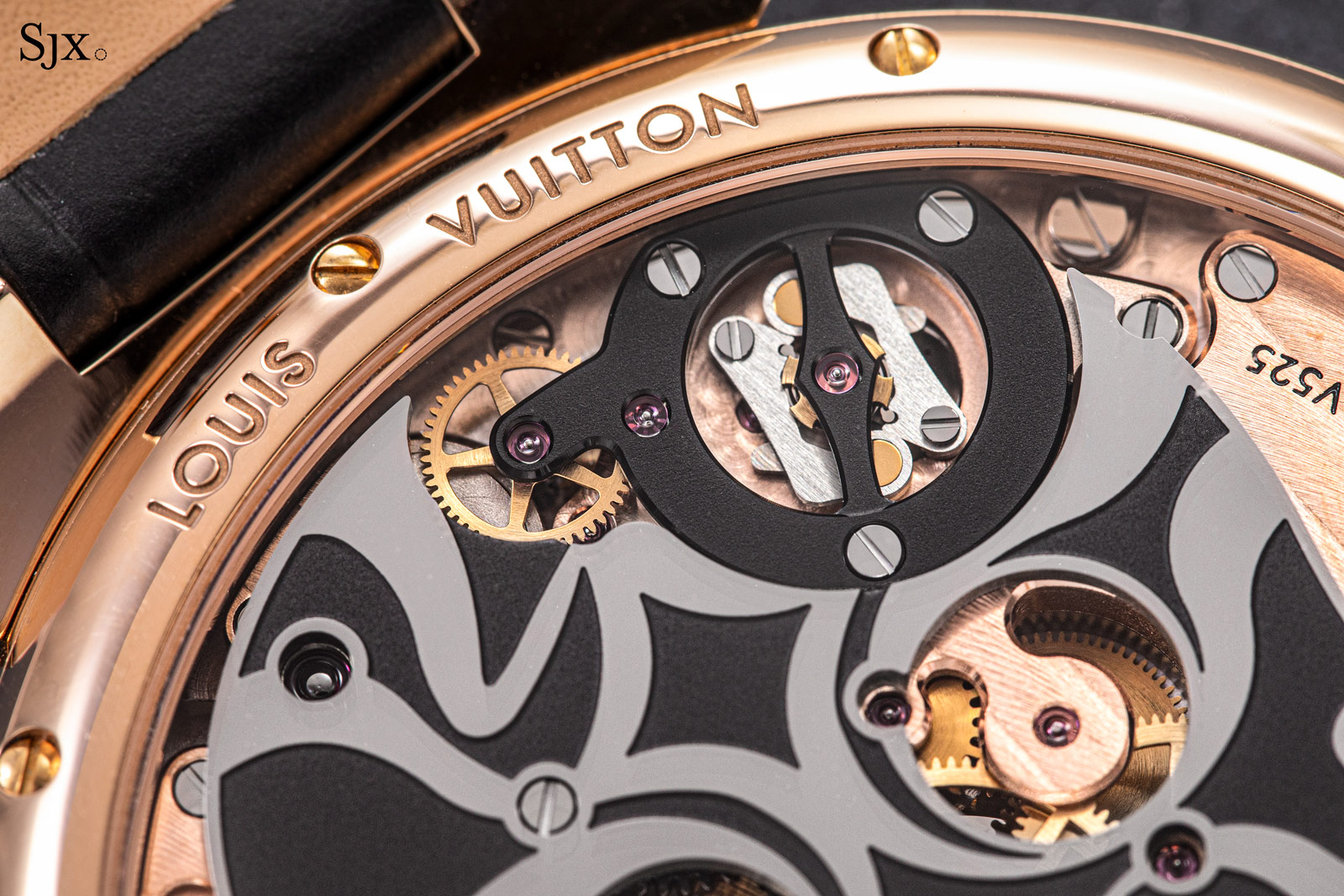
The governor is visible below the circular bridge
While the mask-shaped plates are finished in black-and-grey, the movement below has a more traditional decoration. The bridges are plated in pink gold and striped, while the base plate is finished with perlage.
The decoration is comprehensive and neat, countersinks are polished and edges bevelled, but it is predominantly industrial haute horlogerie rather than artisanal work as the dial is. The style of decoration is reminiscent of recent Parmigiani, including the Tonda PF Sport. LFT is capable of more refined decoration – the Tambour Curve Flying Tourbillon Poincon de Geneve is a good example – which would make the Opera Automata more appealing.
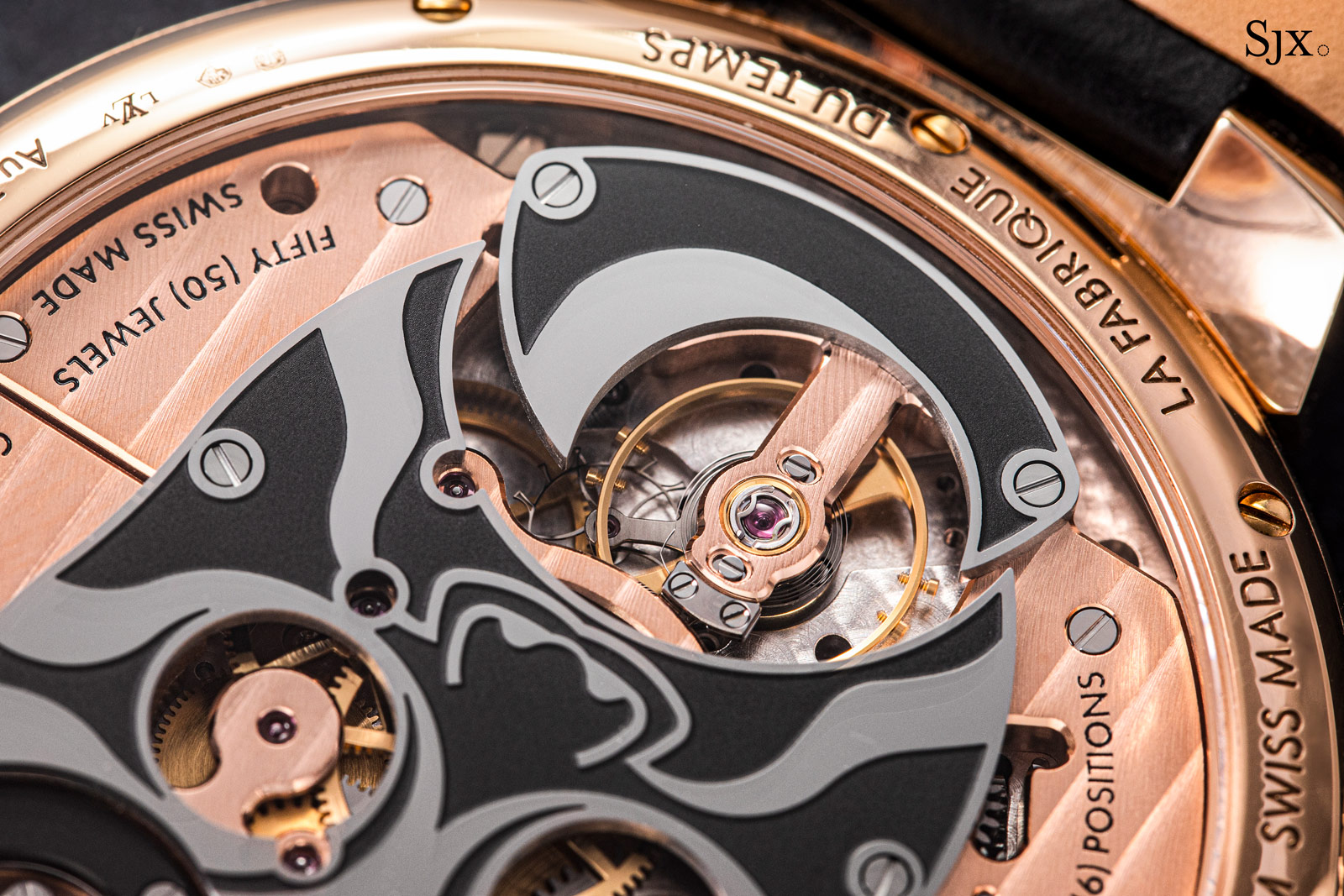
Concluding thoughts
The Tambour Opera Automata is showy in size and style, but it is especially finely detailed on the dial. Equally impressive is the automata, which makes this a rare offering amongst highly complicated watches. The movement finishing could, and arguably should, be better.
Key facts and price
Louis Vuitton Tambour Opera Automata
Ref. Q1EN2Y
Diameter: 46.8 mm
Height: 14.4 mm
Material: 18k pink gold
Crystal: Sapphire
Water resistance: 30 m
Movement: LV 525
Functions: Jaquemart with four automatons – jumping hour, retrograde minute hand, power reserve indicator, and jaw of mask
Frequency: 21,600 beats per hour (3.5 Hz)
Winding: Hand wind
Power reserve: 100 hours
Strap: Leather with pink gold folding clasp
Limited edition: No but very limited production
Availability: At Louis Vuitton boutiques
Price: €520,000 before taxes
For more, visit Louisvuitton.com.
Back to top.

